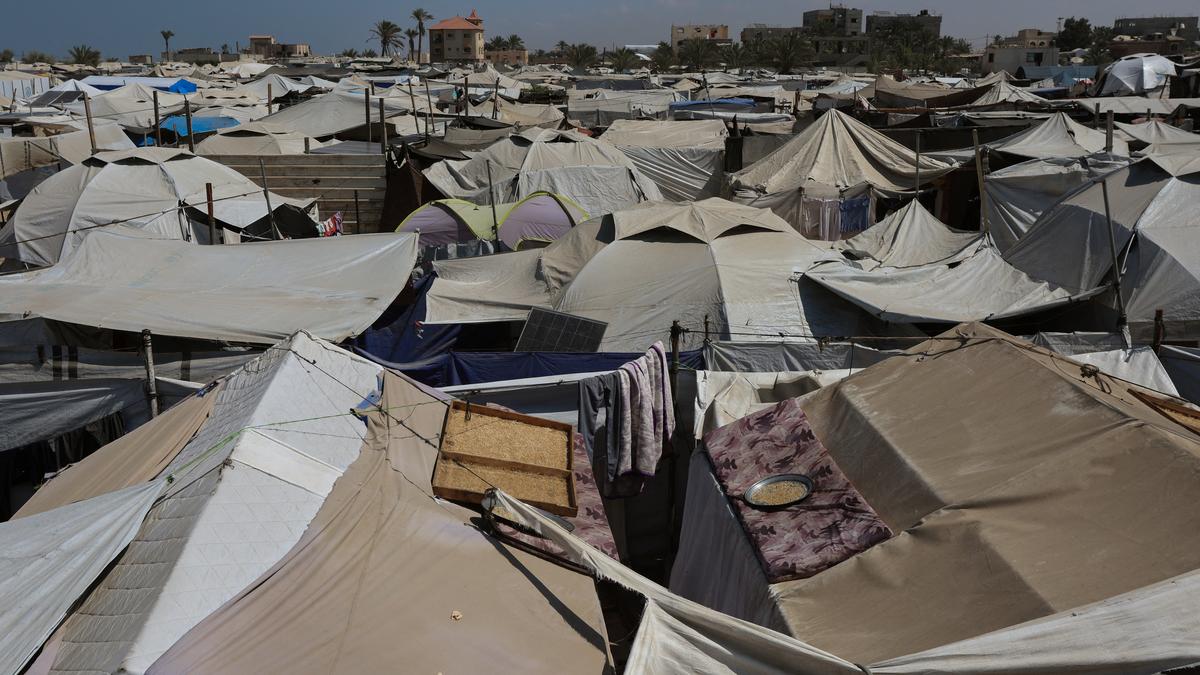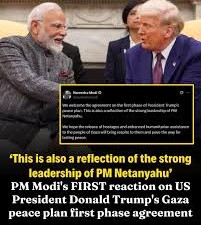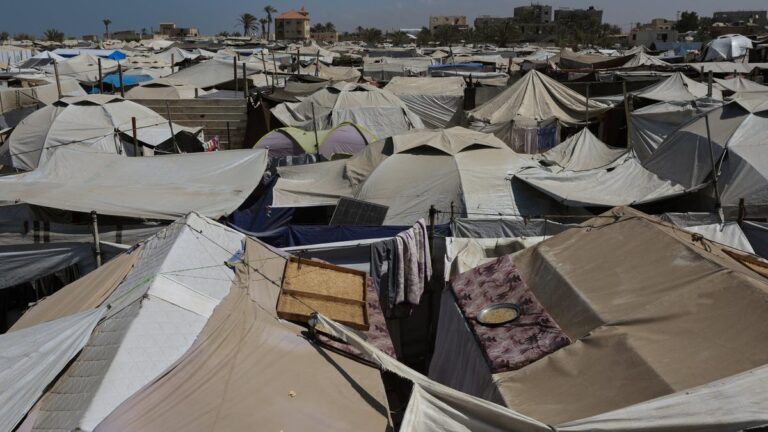
First Phase of Israel Deal
Israel and Hamas reached a deal to pause fighting and exchange captives under U.S. President Donald Trump’s 20-point peace plan.
In what is being hailed as the most significant diplomatic breakthrough in months, Israel and Hamas have agreed to the “first phase” of a ceasefire and hostage exchange deal, U.S. President Donald Trump announced on Wednesday.
The agreement calls for a temporary pause in fighting and the release of hostages and Palestinian prisoners, under the terms of Trump’s 20-point peace plan. The deal is slated to be formally signed on Thursday in Egypt around 09:00 GMT (2:30 p.m. IST), according to a source familiar with the negotiations.
Key terms of the deal
Under the agreement:
- Hostage release: Hamas will free 20 living hostages in exchange for Israeli agreement to release Palestinian prisoners.
- Prisoner swap: Israel will release 2,000 Palestinian prisoners — including 250 serving life sentences and 1,700 others arrested since the war began.
- Timing: The exchange must take place within 72 hours of implementation.
- Israeli troop withdrawal: Israel is expected to begin withdrawing forces from portions of Gaza to agreed lines, as a first step under the ceasefire.
Trump described the accord as the first move towards a “strong, durable, and everlasting peace.” He also said the U.S. would assist in reconstruction efforts and remain engaged in further negotiation.
Israeli Prime Minister Benjamin Netanyahu hailed the deal as a “diplomatic, national, and moral victory,” saying that, “with God’s help, we will bring them all home.”
Hamas, in its response, affirmed that the agreement was reached after “responsible and serious negotiations,” and reaffirmed its commitment to the national cause, stating the ceasefire does not imply abandonment of its broader objectives.
Reactions and conditions
The announcement has been met with cautious optimism across the world. United Nations officials, including the President of the UN General Assembly, have called for the ceasefire to ensure immediate delivery of humanitarian aid to Gaza.
However, observers caution that past ceasefires have collapsed due to lack of implementation or renewed hostilities. Critics note that key issues—such as the future governance of Gaza, Hamas’s disarmament, reconstruction, and long-term security arrangements—remain unresolved.
Israel’s approval is not yet final. The deal requires formal ratification by the Israeli Cabinet, which is expected to meet on Thursday to vote on the list of Palestinian prisoners to be released. Israel’s ambassador to the U.S. has said the 72-hour clock for hostage release will begin after the Cabinet’s approval.
In Gaza, Palestinians responded with a mix of relief and skepticism. Many have endured years of bombardment, displacement, deprivation of basic services, and catastrophic humanitarian conditions. One man in Khan Younis said, “Thank God for the ceasefire, the end of bloodshed and killing.”
Families of hostages, meanwhile, have voiced a mixture of hope and anxiety, pressing governments to ensure the deal is fully and swiftly implemented.
Challenges ahead
While the agreement marks progress, its success hinges entirely on compliance by both sides.
- Guarantees & monitoring: Effective mechanisms will be needed to verify release, troop movements, and cessation of hostilities.
- Humanitarian access: Even under a ceasefire, ensuring safe, unobstructed entry of food, medicine, fuel, and other essential relief into Gaza will be vital.
- Security and demilitarisation: Whether Hamas will agree (or be able) to demilitarise remains a contentious issue.
- Gaza governance: Who administers Gaza after the ceasefire—Hamas, the Palestinian Authority, or a transitional international body—remains unsettled.
- Durability: Past truces have faltered when violations occurred. The parties will need to build trust quickly and avoid spoilers.
If fully implemented, this deal could represent a turning point in more than two years of war. Since the Hamas cross-border attack on 7 October 2023 triggered Israel’s military response, more than 67,000 Palestinians are estimated to have died, and much of Gaza’s infrastructure has been destroyed.
Still, observers warn that the deal is only a first step. The path ahead is fraught with dangers, and many of the war’s deepest issues remain unresolved.
If the ceasefire holds, within days 20 hostages and 2,000 Palestinian prisoners may be freed, opening a window for a more durable peace process and humanitarian relief. But for millions in Gaza, the immediate concern is survival: water, food, medical care, shelter, and safety. Implementation will be as critical as the agreement itself.

In a show of international support, Indian Prime Minister Narendra Modi welcomed the development, writing on X (formerly Twitter):
“We welcome the agreement on the first phase of President Trump’s peace plan. This is also a reflection of the strong leadership of Prime Minister Netanyahu.”
















